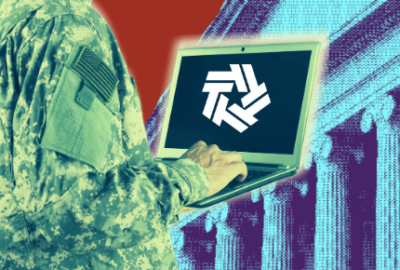
Army moves forward with streamlining software acquisition
The Army pushes forward a fast track for software acquisition and new ways to manage IP licensing.
After five years of struggles to streamline and modernize the Defense Department’s software acquisition programs, the process may finally be catching some tailwind.
The Army now has scheduled deliveries for several software acquisitions, with more to follow. Additionally, it will soon start an expert cell to improve requirements for intellectual property (IP) licensing.
Officials say it might not be time to declare victory, but they have moved the ball farther down the field.
“These programs I’ve started to execute in the last one to two years, we’ve seen some great successes. We’ve also seen some challenge areas,” Margaret Boatner, deputy assistant secretary of the Army for strategy and acquisition reform, said at an AFCEA NOVA event last Friday.
The improvements stem from an approach to software acquisition that recognizes the short shelf life of technology and seeks to condense the process. DoD acquisition professionals use something called the software acquisition pathway as a way to bypass some of the traditional roadblocks to acquisition.
“The objective of the software pathway specifically is to move us away from a linear, waterfall approach to a more integrated and agile modern approach to software, really recognizing that technology development cycles are more accelerated in the software systems than they are in our hardware systems,” Boatner said.
The software acquisition pathway is one of six the Pentagon introduced in 2020. It offers greater flexibility to acquisition professionals for buying goods and services.
The Army currently has nine programs going through the software acquisition pathway. They range in categories from the most complex, which require a higher level of oversight, to more straightforward programs. Of the nine, four are already in the execution phase with scheduled deliveries of iterative capabilities.
“By using this pathway we are able to operate outside of the traditional requirements process and the traditional acquisition process. There’s also a streamlining of documentation and review,” Boatner said.
The software acquisition pathway also requires that a minimum viable product see delivery within one year, with iterative capability releases annually thereafter.
“This requirement is really a forcing function to move the Army to align with industry best practices and ensure we’re delivering capabilities that are useful,” Boatner said.
Even with the progress its made, Boatner said the Army still needs to do more to improve software acquisition.
Challenges remain in managing and maintaining iterative requirements, and testing practices don’t always support agile development. Contracting officers often lack the software expertise to implement a new approach.
In addition to software development, Boatner said the Army is in the process of hiring a new IP expert cell to improve IP licensing.
The Army is reviewing resumes and will hire 10 people with IP expertise to start the cell. Its mission includes enhancing communications between the acquisition workforce and industry to create a resource for IP questions and information.
“What the cell is supposed to do is provide that dedicated advice, assistance and resources to the acquisition workforce, but also importantly, to our industry partners on all IP matters,” Boatner said. “They’re going to have a couple of key tasks. First, working directly with our program and contracting offices so that we can develop thoughtful IP strategies.”
Boatner said she expects the cell to help with requirements for IP so that companies don’t feel like they are giving away their secrets when they work with the Army. Licensing requirements can be customized for individual companies, but the contracting officers first need the knowledge to write those requirements.
Small companies in particular need a resource to talk through issues so they can gain a level of comfort in working with the Army.
“I do think it’s going to help our internal acquisition community better understand and implement these balanced approaches. But it’s going to be an important resource for industry as well. Hopefully, it will incentivize more industry participation and allow us to access more innovation,” Boatner said
Copyright © 2024 Federal News Network. All rights reserved. This website is not intended for users located within the European Economic Area.
Alexandra Lohr, a former staff member, covered the Defense Department for Federal News Network until September 2023.
Related Stories






